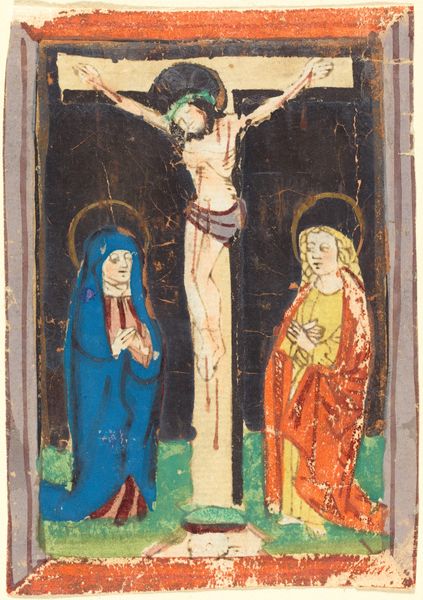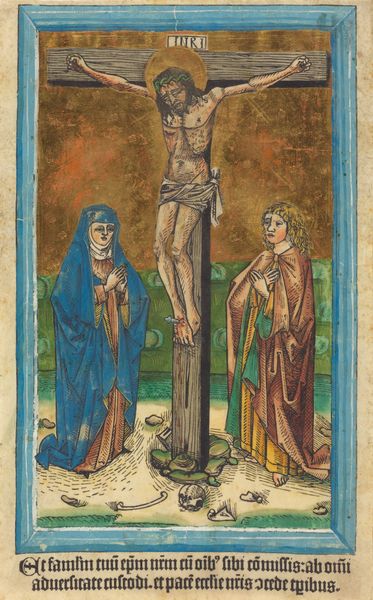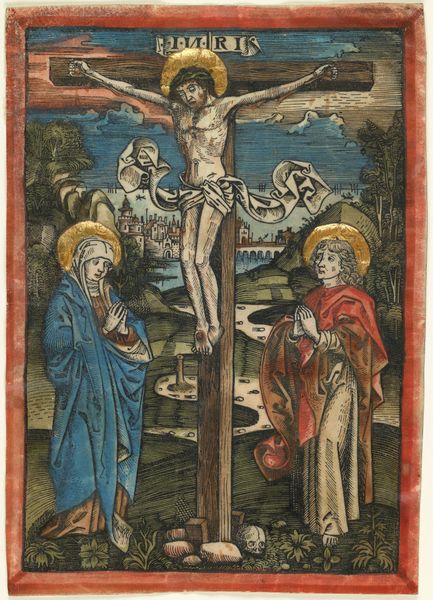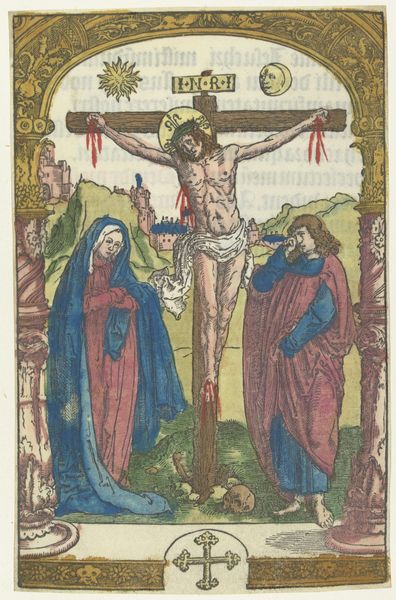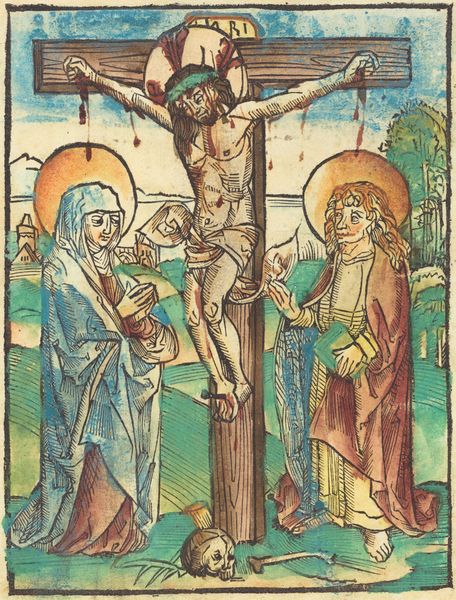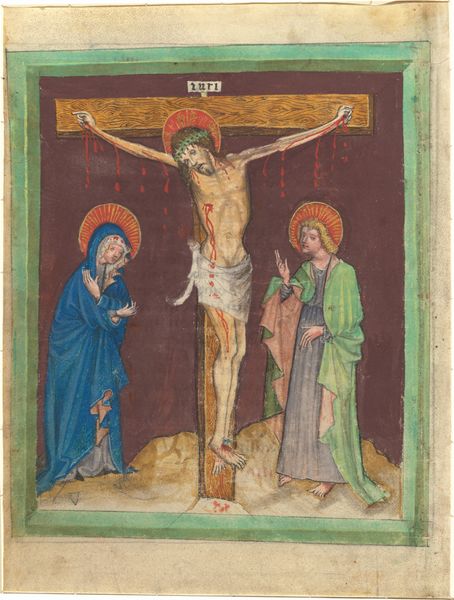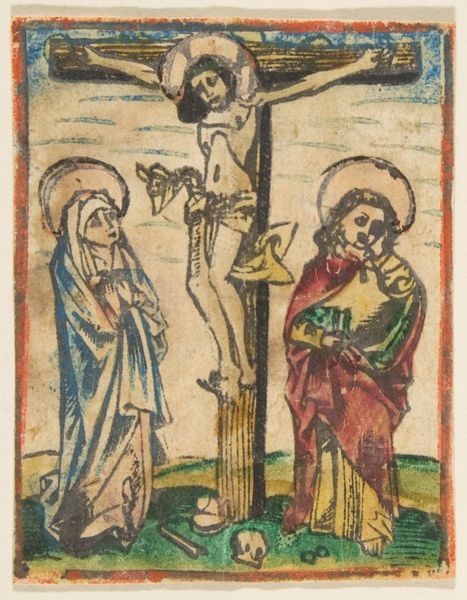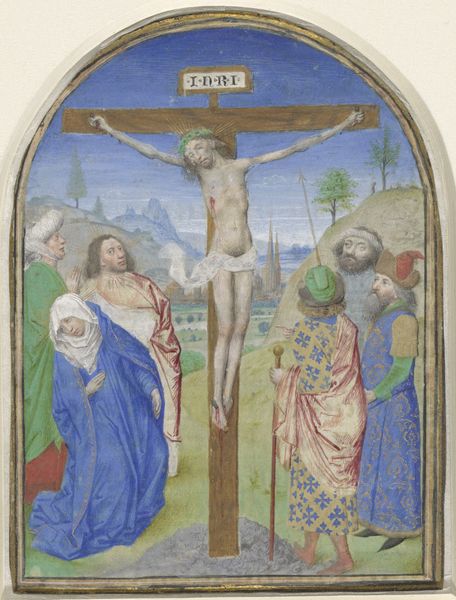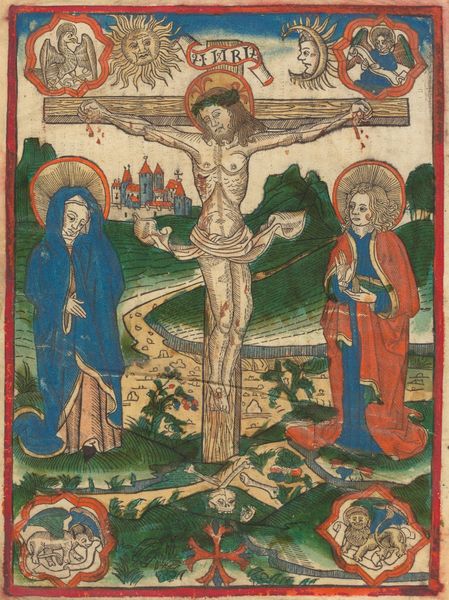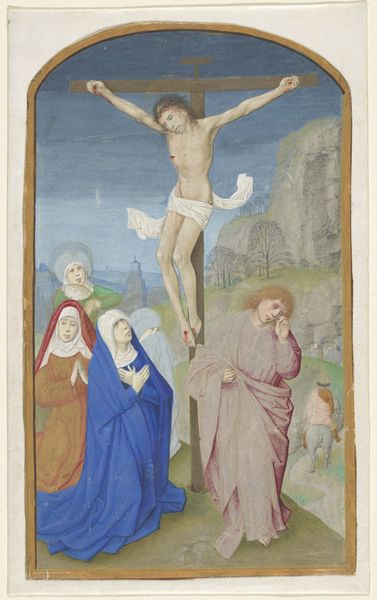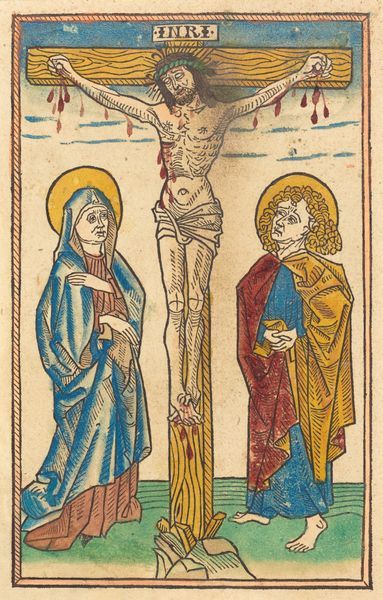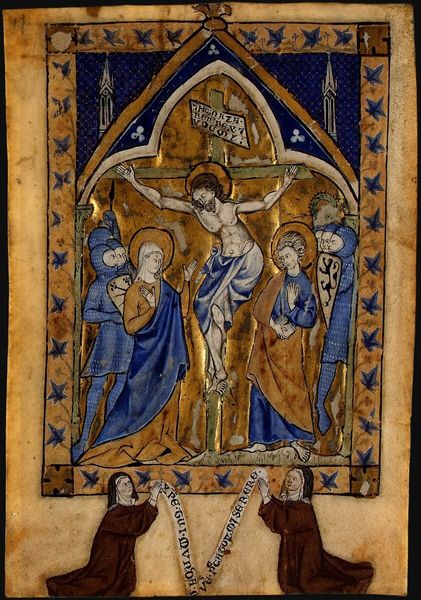
drawing, coloured-pencil, tempera, print
#
drawing
#
coloured-pencil
#
narrative-art
#
tempera
# print
#
figuration
#
cross
#
coloured pencil
#
men
#
crucifixion
#
history-painting
#
italian-renaissance
#
christ
Dimensions: image: 11 5/16 x 6 15/16 in. (28.8 x 17.7 cm)
Copyright: Public Domain
Curator: Looking at this piece, what's your initial take? Editor: It’s striking how the rich colors and gold-leaf ground clash with the raw, graphic depiction of Christ's suffering. What can you tell me about it? Curator: This is "Christ on the Cross," likely created between 1480 and 1490 by an anonymous artist, currently held at the Metropolitan Museum of Art. It appears to combine printmaking with hand-applied color using tempera and colored pencils. Editor: The process makes me think about the economics of image production then – the move towards cheaper, reproducible images democratizing religious iconography. Yet, the hand-finishing elevates it. Notice those sharp, linear folds in Mary's blue drapery. Curator: Exactly. Blue for Mary became a standardized convention, didn’t it? Beyond the symbolic weight of colors like blue representing purity or divinity, this rendition strikes me as a study in contrasts of agony and serenity. See how the two figures flank the cross – their halos suggesting almost unfazed acceptance, embodying unwavering faith amid mortal suffering. The skull at the base alludes to mortality overcome, yet I feel there is tension as Christ's figure is much smaller. Editor: Absolutely. And that skull – isn't it fascinating how material symbols, like skulls in momento mori traditions, transform in meaning and usage as they circulate through cultures? Speaking of materials, I’m intrigued by the surface; I’d love to know what type of paper they printed and drew on, its specific weight and weave contributing to the final image’s texture. Curator: These combined techniques show an interesting exchange between the readily available and personalized craftsmanship, revealing artistic exploration within defined spiritual iconography. What sticks with me is this push and pull—how makers wrestled faith visually with the demands of material reality. Editor: For me, understanding art is rooted in those very constraints – how artists negotiate the physical properties and possibilities of their world. Thinking about the layers here of labor, meaning, and consumption across time brings a vivid presence. Curator: A compelling lens through which to examine how belief takes tangible form.
Comments
No comments
Be the first to comment and join the conversation on the ultimate creative platform.
